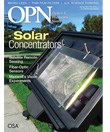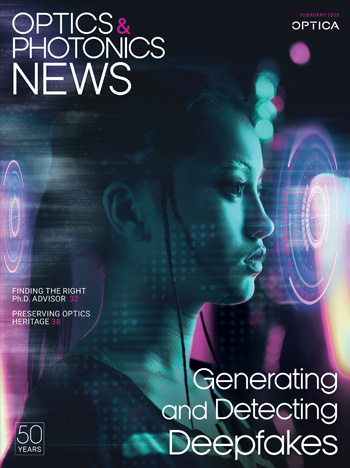Feature Articles
Solar Concentrators: Using Optics to Boost Photovoltaics
The use of solar energy requires optimizing each part of a photovoltaic system: collection optics, the photovoltaic array, switches, controllers, current inverters, storage devices and tracking mechanics. A vast amount of research is currently focused on perfecting each of these areas. Several types of solar concentrator technology are transitioning from the R&D stage to commercial deployment.
by Valerie C. CoffeyState-of-the-Art Satellite Remote Sensing
The Earth-observation business has undergone a sea change. Commercial firms have launched satellites with sophisticated imaging capability once reserved for classified government specialists. Today, there are more high-resolution satellite images available than ever before—and they are accessible to anyone with an Internet connection.
by Joan LurieFiber-Optic Sensors: Playing Both Sides of the Energy Equation
Fiber-optic sensors are playing an emerging role in both new energy-generation technologies—including wind, solar and geothermal—and approaches for improving recovery of our existing oil and gas reserves.
by Paul E. SandersA History of Human Color Vision—from Newton to Maxwell
Color vision has attracted the attention of philosophers and scientists throughout the ages—from Aristotle to Goethe to Schrödinger. This article tracks the history of color vision over more than three centuries, with a particular emphasis on the contributions of James Clerk Maxwell.
by Barry R. MastersDepartments and Columns
E-Day 2010: Overcoming Barriers to Teaching Optics
More than ever, we need today's students to embrace science. The 2010 Science Educator's Day was developed to help secondary-school teachers find the time and opportunity to make optics a part of their curricula.
Angle-Tuned Thin-Film Interference Filters for Spectral Imaging
By using angle-tuned thin-film interference filters, optical engineers can capture nonstandard wavelengths during spectral imaging without compromising performance.
Report from Capitol Hill: The Outlook for Science Funding
What does the new political landscape in Washington mean for U.S. science?
Boosting Photovoltaic Efficiency with Multiple Excitons
Three U.S. chemists have found a way to wring more electrons per photon from quantum dots, and their technique could lead to new kinds of efficient, inexpensive solar cells.
Presidents of the Late 1950s
John Howard recalls the lives of four key Society leaders in the late 1950s.
Micro-LEDs Flex for Biomedical Applications
A new method for combining tiny LEDs with flexible substrates could lead to a host of biomedical applications.
Spectroscopy during Surgery Could Catch Tumors
A pen-like device that collects both fluorescence and Raman spectra could enable more accurate surgeries to remove tumors.
Bright Coherent X-rays sans Synchrotron
Researchers have produced bright spatially-coherent X-rays from a tabletop source.


![Illustration of a synapse in the brain. [Getty Images]](https://opnmedia.blob.core.windows.net/$web/opn/media/images/articles/2025/0425/departments/202504-cover-web.jpg?ext=.jpg)
![Fiber draped around a hand, demonstrating its flexibility. [Photo by Z. Wang and L. Wei]](https://opnmedia.blob.core.windows.net/$web/opn/media/images/articles/2025/0325/departments/202503-cover-web.jpg?ext=.jpg)
